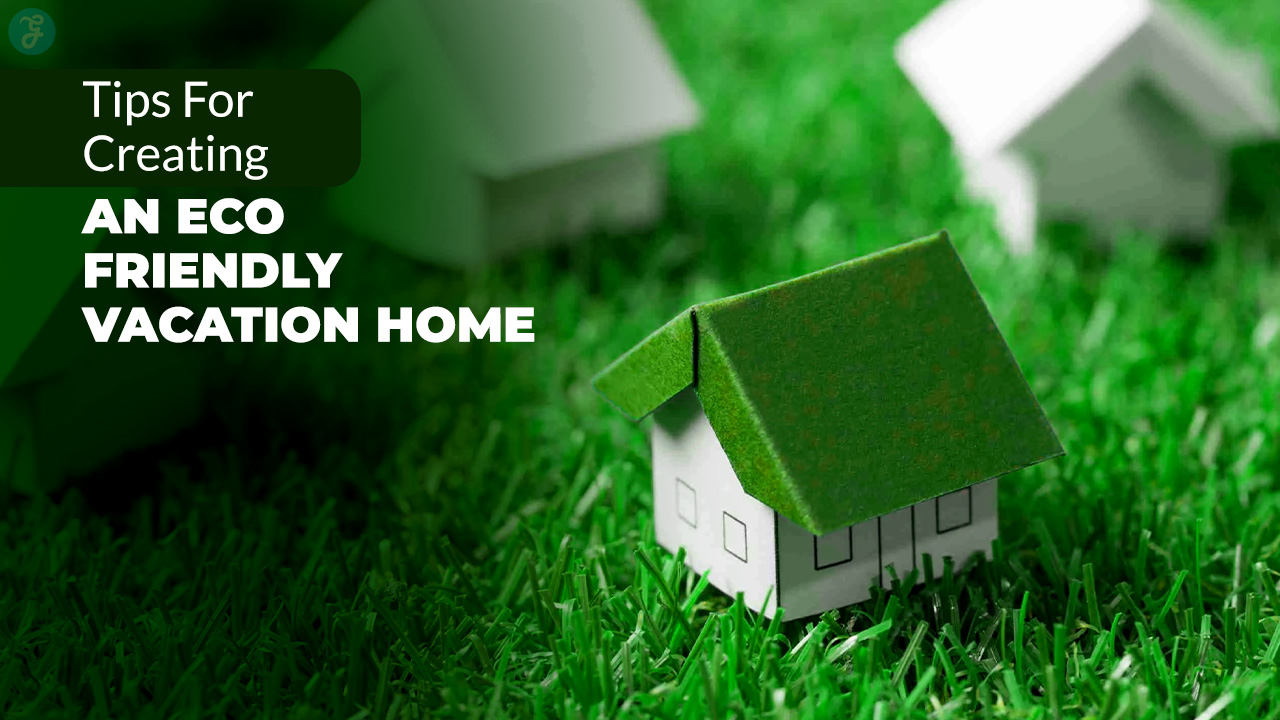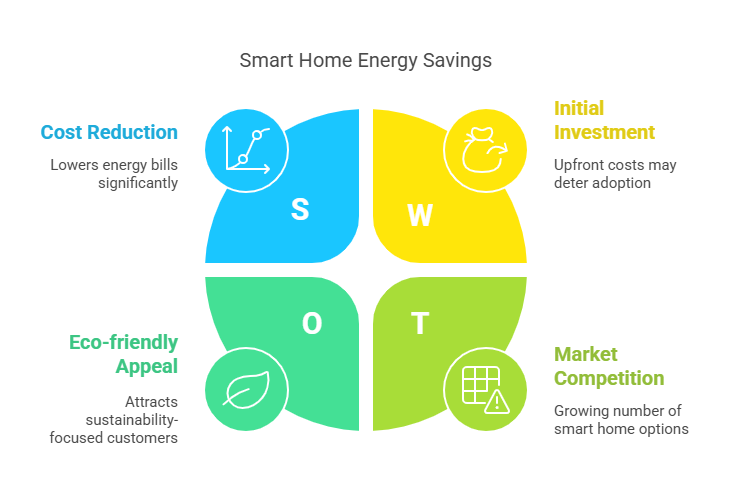Vacations are a time to relax, but could your vacation home be harming the planet? Many travelers want eco-friendly options, yet some homes waste energy, water, and resources. Such behavior creates problems for both the environment and your wallet.
Did you know 78% of global travelers plan to stay in eco-friendly accommodations? Guests now care more about sustainable travel than ever before. With small changes like using LED bulbs or adding recycling bins, you can make a big impact on reducing waste.
This guide will show you how to turn your vacation rental into an environmentally friendly retreat. Are you prepared to transform your vacation rental into an eco-friendly haven that your guests will adore? Keep reading!
Optimize Your Vacation Home with Energy-Efficient Lighting and Appliances
Switch to LED bulbs. They reduce energy use by 85% compared to old lights and have a longer lifespan. Use ENERGY STAR-rated appliances, such as dishwashers or washing machines, to save as much as $300 a year on energy bills.
Replace outdated CFL bulbs with LEDs for improved light quality and reduced expenses.
Opt for smart thermostats for more efficient heating and cooling. These devices automatically adjust the temperature based on your routines, cutting down on waste. Energy-efficient systems help conserve energy while also minimizing operational expenses over time—a double benefit!
Integrate Smart Home Technologies for Efficiency
Smart home technologies slash energy consumption and save money. A smart thermostat like Nest or ecobee can cut heating and cooling costs by adjusting temperatures based on usage. These devices stop air conditioning from running when no one is home, saving up to $500 annually per vacation rental.
Automation systems also boost efficiency with features like motion-activated lighting. Forget leaving the lights on—smart bulbs automatically switch off in empty rooms. Pair these with energy-efficient appliances for maximum savings.
Simple upgrades make eco-friendly vacation rentals more sustainable while lowering their carbon footprint.
Enhance Water Conservation Efforts
Cutting water waste is easier than you think—small changes can make a big impact.
Install Low-Flow Water Fixtures
Low-flow water fixtures save both water and money. A modern low-flow toilet, such as a dual-flush model, uses about 1.28 gallons per flush compared to older models that use up to 7 gallons.
Low-flow showerheads can cut water usage by half without sacrificing pressure. These fixtures reduce waste while lowering utility bills.
Switching to low-flow faucets makes a big impact too. Standard faucets flow at around 2 gallons per minute; low-flow options drop the rate to about 1.5 gallons or less, conserving water with every use.
These upgrades are easy for property managers and eco-conscious travelers aiming for sustainable vacation rentals focused on reducing their carbon footprint and conserving resources responsibly!
Implement Rainwater Collection and Reuse Systems
Collecting rainwater is a smart way to save water and reduce bills. It also helps prevent flooding and erosion during heavy storms.
- Install a rain barrel under your gutter system. The device collects runoff from your roof and stores it for later use.
- Use the collected water for sustainable landscaping or irrigation. Plants thrive on chemical-free rainwater, boosting your garden’s health.
- Choose barrels with built-in filters to keep debris and insects out. This improves water quality for reuse.
- Add overflow spouts to your barrels to manage excess water during downpours. This technique reduces stormwater runoff problems in your area.
- Connect multiple barrels if you need more storage capacity, especially in regions with frequent rainfall.
- Incorporate closed-lid designs or covers to prevent mosquito breeding in standing water.
Rain collection offers benefits beyond saving money—it supports water conservation efforts and lowers environmental impact!
Improve Recycling Options at Your Vacation Home
Set up simple ways to sort trash, making recycling straightforward and stress-free for everyone.
Provide Clearly Labeled Recycling Bins
Place recycling bins in easy-to-spot areas like the kitchen, patio, or near trash cans. Use clear labels with simple icons and words, such as “Plastic,” “Paper,” or “Glass.” Bright colors can also help grab attention.
Guests are more likely to recycle if they know exactly where to put their items.
A study shows 94% of Americans support recycling, but only 35% actually do it. Clear signage makes sorting waste less confusing for eco-conscious travelers. This small step reduces the carbon footprint of vacation rentals and promotes better waste management.
Introduce Composting Opportunities
Composting is an easy way to reduce waste and help the planet. It turns food scraps and yard waste into rich soil for plants.
- Set up a compost bin in your vacation rental. Choose one that is compact, odor-free, and easy to maintain.
- Use clear signs to inform guests what materials are compostable. Include items like fruit peels, vegetable scraps, coffee grounds, and grass clippings.
- Add a small countertop container for kitchen scraps. This arrangement makes it simple for guests to collect waste during cooking.
- Remind visitors not to add meat, dairy, or non-biodegradable items. These can attract pests or slow the composting process.
- Encourage guests to include leaves or yard trimmings if available. Mixing these with food scraps creates a balanced compost pile.
- If on-site composting isnot feasible, please share information about local community programs. Many areas have drop-off spots for organic waste.
- Could you please explain the importance of composting? Highlight how it reduces greenhouse gas emissions and supports healthy soil without chemical fertilizers.
Adopt Renewable Energy Solutions
Switching to renewable energy, like solar power, can cut costs and shrink your carbon footprint—ready to make the switch?
Install Solar Panels
Solar panels cut down energy costs and reduce your carbon footprint. They convert sunlight into clean power, helping vacation rentals rely less on the grid. With a payback period of 6 to 15 years, they become a smart investment for eco-friendly vacation homes.
Adding solar panels can also attract eco-conscious travelers looking for green practices in short-term rentals. Pairing them with electric vehicle chargers draws high-end guests who own EVs, further boosting appeal while promoting sustainable tourism.
Choose Sustainable Materials for Vacation Home Furnishings
Pick items that stand the test of time, not just trends. Focus on materials that are kind to both your space and the planet.
Select Reclaimed or Recycled Furniture
Reclaimed wood furniture brings a rustic charm while helping cut down deforestation. Bamboo, a fast-growing material, offers durability and eco-friendliness. Recycled pieces like metal chairs or refurbished tables breathe new life into used materials.
Certifications such as FSC (Forest Stewardship Council) or Cradle to Cradle mark responsible sourcing.
Upcycling old items adds character and reduces waste. An old wooden door can become a dining table; vintage crates can transform into shelves. This boosts sustainability and promotes the circular economy.
Sustainable furnishing doesn’t just look good—it shrinks your carbon footprint too.
Opt for Organic and Non-Toxic Materials
Choose furniture made with organic cotton or linen. These materials are sustainable and free from harmful chemicals. Rugs or curtains crafted from recycled polyester also reduce waste while keeping your décor stylish.
Non-toxic paints and sealants improve indoor air quality by cutting down exposure to VOCs (volatile organic compounds). Safer household products mean a healthier space for eco-conscious travelers renting vacation homes.
Offer Eco-Friendly Products to Guests
Want to wow eco-conscious guests? Stock up on green products that reduce waste and promote sustainable habits.
Supply Reusable Shopping Bags and Water Bottles
Reusable shopping bags reduce single-use plastics. The average plastic bag is used for only 12 minutes before becoming trash, damaging the environment. Using reusable options can help families save around $75 per year on disposable bags.
Provide these in your vacation rental to encourage guests to make environmentally friendly choices.
Provide refillable water bottles as well. Disposable bottles significantly contribute to waste. Reusable ones help reduce this impact and promote better habits for sustainable travel.
This straightforward step decreases the carbon footprint and aligns with eco-conscious travelers’ preferences, making your property greener and more inviting!
Provide Biodegradable Cleaning Products
Stock your vacation home with biodegradable cleaning products. These items use sustainable packaging and safe ingredients, reducing environmental harm. Brands like Puracy or Ecominim offer eco-friendly solutions that emit fewer VOCs, making them ideal for families or vacationers with health concerns.
By swapping harsh chemicals for these green alternatives, you lower the property’s carbon footprint. Guests will also appreciate these gentle options during their stay in your eco-friendly vacation rental.
Promote Local and Sustainable Practices
Support nearby businesses to boost the local economy while reducing your carbon footprint. Encourage guests to explore eco-friendly options so they can travel responsibly and enjoy green tourism.
Source Supplies Locally
Buy goods from local businesses to help the nearby economy thrive. Fresh produce, handmade items, and organic products can make great additions to your rental. Welcome baskets with regional snacks or locally roasted coffee create a warm touch for eco-conscious travelers.
Choosing local suppliers also cuts transport emissions, reducing your carbon footprint. It’s a win-win—supporting sustainability while showcasing the charm of the community!
Suggest Eco-Friendly Tours and Activities
Eco-friendly tours can make vacations both exciting and sustainable. These ideas help visitors enjoy nature while reducing their environmental impact.
- Recommend biking tours over driving-based sightseeing. This promotes health, reduces fuel use, and lessens the carbon footprint of their trip.
- Encourage guests to visit local parks or wildlife reserves that practice green tourism. Supporting protected areas boosts conservation efforts.
- Suggest kayaking or paddleboarding trips instead of motorized boats. These activities are fun, eco-friendly, and do not harm water quality.
- Highlight walking tours in historic towns or cultural sites. Walking keeps it green while giving visitors a great experience with minimal environmental impact.
- Offer tips about public transportation routes for city exploration. Buses, trains, or subways are more sustainable than renting private cars.
- Share information about nearby organic farms where guests can pick fruits or vegetables themselves. Such visits support the local economy and promote sustainable practices.
- Introduce travelers to companies offering eco-friendly vacation rentals near hiking trails and nature spots instead of crowded resorts filled with artificial lighting and heavy air-conditioning.
- Promote group excursions led by local guides who follow green practices like waste reduction and wildlife protection.
- Recommend farmers’ markets or eco-conscious food tours featuring locally grown products free from single-use plastics like bags or packaging items.
- Suggest stargazing trips where natural light pollution is low instead of city nightlife options relying on energy-hungry artificial lights.
Takeaways
Creating an eco-friendly vacation home isn’t just about saving the planet; it’s also about crafting a cozy and smart space. Small steps like swapping lightbulbs, choosing organic materials, or adding a compost bin can make a big impact.
Plus, guests appreciate sustainable touches that reduce environmental harm while boosting comfort. Start now—every green choice matters!
FAQs on Tips For Creating An Eco-Friendly Vacation Home
1. What are some sustainable practices for creating an eco-friendly vacation rental?
Use energy-efficient appliances, install solar panels, and add recycling bins. Focus on water conservation with low-flow showerheads and smart home technologies like a smart thermostat.
2. How can I reduce the carbon footprint of my vacation home?
Switch to renewable energy sources like solar power, use LED bulbs or CFL bulbs, and avoid single-use plastics by providing reusable shopping bags.
3. Why is supporting local businesses important for eco-conscious travelers?
Buying from local suppliers helps boost the local economy while reducing environmental impact caused by transporting goods over long distances.
4. What eco-friendly upgrades can property managers make to short-term rentals?
Install compost bins, replace old heaters with Energy Star appliances, and use real plants instead of artificial ones for air purification.
5. How do energy efficiency improvements benefit green tourism efforts?
Energy-efficient homes consume less power, which supports sustainable travel goals and promotes environmentally friendly living spaces.








































